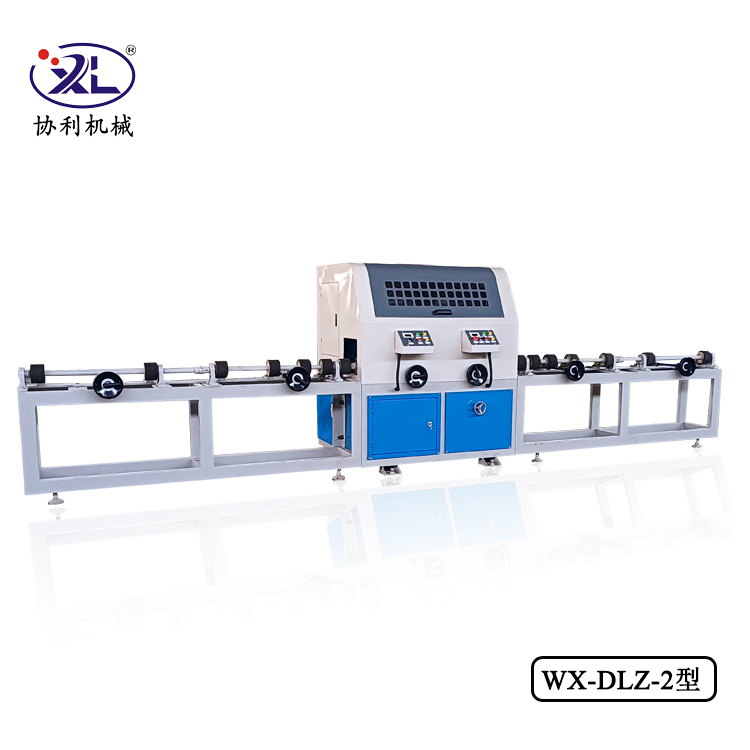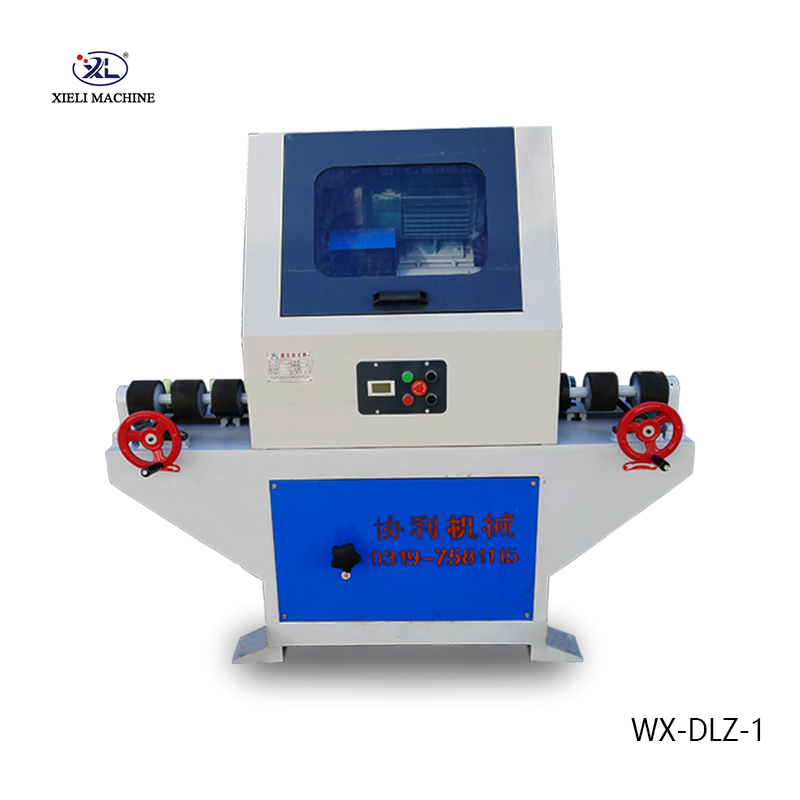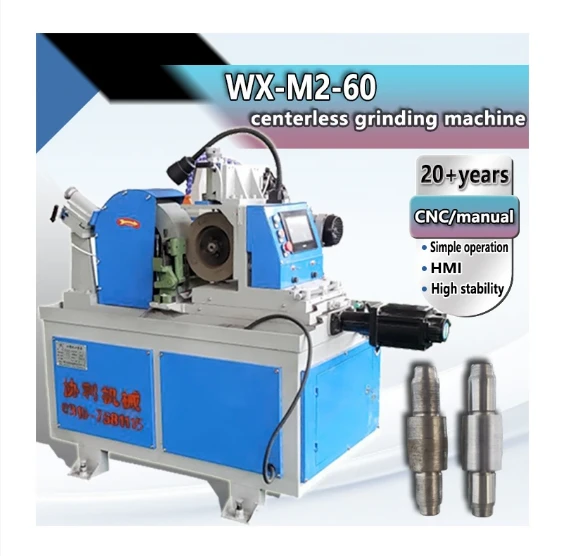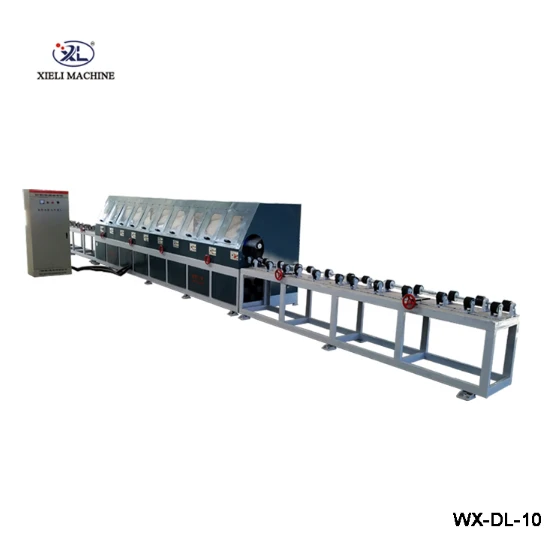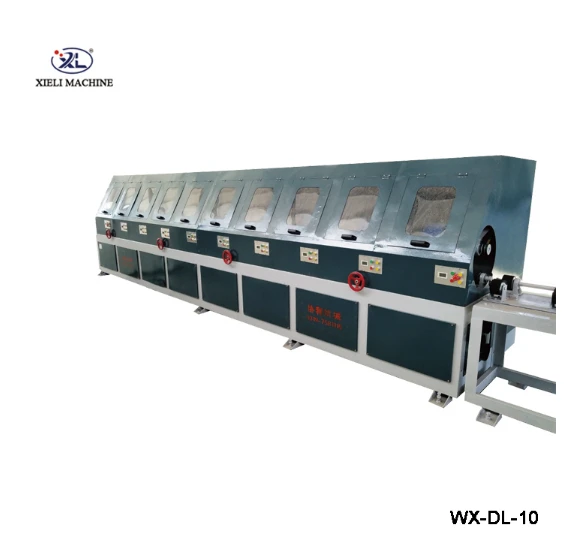In the demanding world of industrial manufacturing, the surface quality of pipes is paramount. From enhancing aesthetic appeal to ensuring critical hygienic standards and preventing corrosion, the role of a high-quality pipe polisher cannot be overstated. This comprehensive guide delves into the intricate world of pipe polishing, with a special focus on the cutting-edge Wet stainless steel pipe rust polishing machine, designed to deliver unparalleled results in even the most challenging environments.
Industry Trends and the Evolving Landscape of Pipe Polishing
The global industrial pipe market is projected to reach over $100 billion by 2028, driven by massive infrastructure projects, growth in the oil & gas sector, chemical processing, and water treatment. With this expansion, the demand for high-performance finishing solutions, particularly for stainless steel pipes, continues to surge. Current trends in pipe polishing technology emphasize automation, precision, and environmental sustainability.
We are seeing a clear shift towards:
- Increased Automation: Automated pipe polisher systems are gaining traction, reducing labor costs, improving consistency, and enhancing safety. Robotic arms and CNC integration allow for complex geometries and higher throughput.
- Enhanced Surface Finish Requirements: Industries like pharmaceuticals, food & beverage, and semiconductor manufacturing demand ultra-smooth surfaces (often measured in Ra values, or Roughness average, where lower Ra indicates a smoother finish) to prevent bacterial growth and material contamination. This pushes the boundaries for polishing precision.
- Sustainability and Eco-friendliness: The adoption of wet polishing processes, such as those employed by the Wet stainless steel pipe rust polishing machine, minimizes airborne dust, reduces abrasive consumption, and allows for easier filtration and recycling of cooling liquids, aligning with stricter environmental regulations.
- Advanced Abrasive Technologies: Continuous innovation in abrasive materials and compounds leads to faster polishing times, extended abrasive life, and superior surface quality.
- Smart Manufacturing and IoT Integration: Future pipe polisher machines will likely incorporate IoT sensors for real-time monitoring of process parameters, predictive maintenance, and data analytics to optimize performance.
Market Overview: Pipe Polisher Demand Growth
According to a report by Grand View Research, the global metal finishing market, which includes pipe polishing, was valued at USD 108.6 billion in 2022 and is expected to grow at a compound annual growth rate (CAGR) of 4.8% from 2023 to 2030. This growth is largely attributable to the increasing demand from the automotive, construction, and electronics sectors, all of which rely heavily on meticulously finished metal components, including pipes.
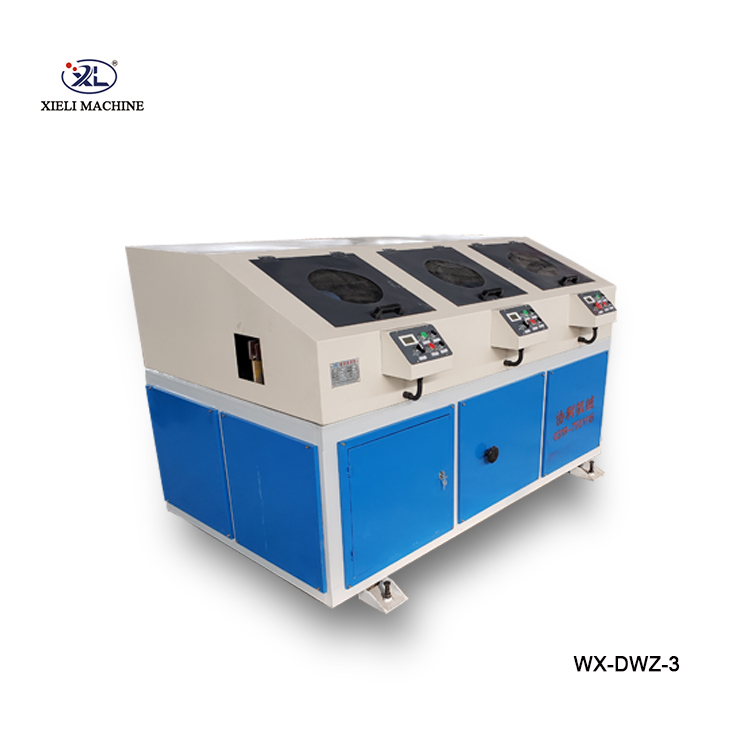
Technical Parameters of Advanced Pipe Polishing Machines
Understanding the technical specifications of a pipe polisher machine is crucial for selecting the right equipment for specific applications. The Wet stainless steel pipe rust polishing machine exemplifies modern engineering, combining robust construction with precise control to achieve exceptional results.
Key Technical Specifications (Example: Wet stainless steel pipe rust polishing machine)
| Parameter | Specification | Description |
|---|---|---|
| Model | XY-P2000WSS | Representative model for the wet stainless steel pipe polisher. |
| Applicable Pipe Diameter | Φ10mm - Φ220mm (0.39" - 8.66") | Versatile range for various pipe sizes. |
| Polishing Motor Power | 7.5 kW - 15 kW (Variable) | High-efficiency motors ensure powerful and consistent polishing. |
| Feeding Speed | 0.5 - 6 m/min (Adjustable) | Allows for optimization of polishing time vs. finish quality. |
| Abrasive Wheel Dimensions | Φ250mm x 50mm - 100mm | Standard dimensions for compatibility with various abrasive types. |
| Number of Polishing Heads | 1 to 10+ (Modular Design) | Scalable for different levels of finish and production volumes. |
| Surface Roughness (Ra) | Down to 0.1 µm (4 µinch) | Capable of achieving mirror-like finishes, critical for hygienic applications. |
| Coolant System Capacity | 150 - 500 Liters | Ensures effective cooling and lubrication for prolonged operation. |
| Machine Dimensions (LWH) | Approx. 2500 x 1200 x 1800 mm | Compact footprint for industrial environments. |
| Machine Weight | Approx. 1500 kg - 3500 kg | Robust construction for stability and durability. |
| Power Supply | 3-Phase, 380V/50Hz or 480V/60Hz | Standard industrial power requirements. |
| Control System | PLC Control with HMI Touchscreen | Intuitive interface for precise parameter setting and monitoring. |
These parameters demonstrate the robust capabilities of a professional stainless pipe polisher. The ability to adjust polishing speed, control abrasive pressure, and manage coolant flow is vital for achieving specific surface finishes and extending the life of consumables.
Application Scenarios: Where Pipe Polishers Shine
The versatility of a high-quality pipe polisher makes it indispensable across a multitude of industries. The Wet stainless steel pipe rust polishing machine, with its specialized rust removal and finishing capabilities, excels in environments where hygiene, corrosion resistance, and aesthetic appeal are critical.
Key application areas include:
- Food and Beverage Industry: For stainless steel piping used in processing milk, juices, beer, and other consumables, achieving ultra-smooth internal and external surfaces (often to Ra
- Pharmaceutical and Biotechnology: Similar to food & beverage, these industries require exceptionally smooth and sterile surfaces for process piping handling active pharmaceutical ingredients (APIs), purified water (PW), and water for injection (WFI). Adherence to standards like ASME BPE (Bio-processing Equipment) is non-negotiable, and advanced polishing is a key step in meeting these requirements.
- Petrochemical and Chemical Processing: Pipes in these sectors are exposed to aggressive chemicals and high temperatures. Polishing improves the corrosion resistance of stainless steel by removing surface imperfections, weld discoloration (heat tint), and surface contaminants that could act as initiation sites for pitting or crevice corrosion. A smooth surface also optimizes fluid flow, reducing friction and energy consumption.
- Water Treatment and Desalination: In municipal and industrial water treatment plants, stainless steel pipes are used for their durability and corrosion resistance. Polishing ensures longevity and prevents biofilm formation, which can impair water quality and system efficiency.
- Architectural and Decorative Applications: For visible piping in modern buildings, railings, and artistic installations, aesthetic appeal is paramount. A mirror finish achieved by a pipe polisher enhances the visual quality of stainless steel components, showcasing their inherent beauty.
- Automotive and Aerospace: While less common for large pipes, precision polishing is used for specific tubular components where smooth surfaces are required for aerodynamic efficiency, fluid dynamics, or structural integrity.
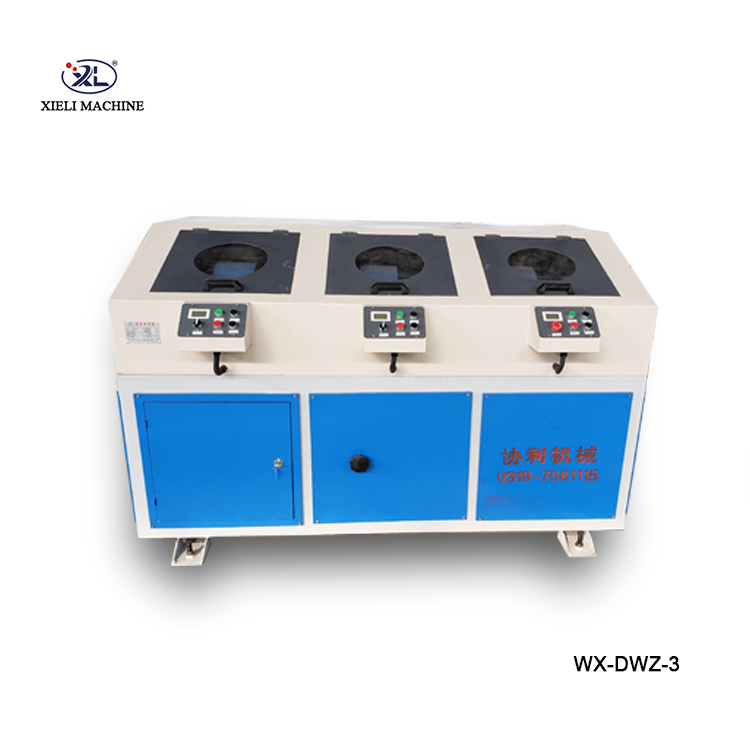
Technical Advantages of the Wet Stainless Steel Pipe Rust Polishing Machine
The Wet stainless steel pipe rust polishing machine stands out due to its specific design advantages tailored for superior performance, especially in rust removal and achieving high-quality finishes on stainless steel.
Core Advantages:
- Superior Rust and Contaminant Removal: Unlike dry polishing, the wet process effectively removes surface rust, oxides, weld discoloration (often referred to as 'heat tint' or 'blueing'), and other surface contaminants without excessive heat buildup. The continuous flow of coolant washes away abrasive particles and debris, preventing scratches and ensuring a cleaner finish. This is particularly crucial for stainless steel, where surface cleanliness directly impacts its passivation layer and corrosion resistance.
- Enhanced Surface Finish Quality: The presence of coolant acts as a lubricant, reducing friction and heat. This allows for finer abrasive action, leading to a smoother, more consistent, and often brighter finish with lower Ra values. The cooling effect also prevents material distortion or metallurgical changes that can occur with high-heat dry polishing.
- Reduced Dust and Improved Safety: Dry polishing generates significant amounts of metal dust, which can be a respiratory hazard and, for certain metals, an explosion risk. The wet process effectively suppresses dust, creating a safer and cleaner working environment for operators, reducing the need for extensive dust collection systems, and minimizing environmental impact.
- Extended Abrasive Life: Coolant reduces heat and friction on the abrasive wheels, significantly extending their lifespan. This translates to lower consumable costs and less downtime for abrasive changes.
- Optimized for Stainless Steel: Stainless steel relies on a passive chromium oxide layer for its corrosion resistance. Aggressive dry polishing can sometimes compromise this layer. The wet process is gentler, helps maintain surface integrity, and can even facilitate subsequent passivation treatments (chemical processes to enhance the passive layer) by providing a pristine surface.
- Precision Control: Equipped with advanced PLC (Programmable Logic Controller) systems and HMI (Human-Machine Interface) touchscreens, the machine offers precise control over polishing pressure, rotational speed, and feeding speed. This allows operators to fine-tune the process for specific pipe materials, diameters, and desired finish levels.
- Energy Efficiency: Modern designs, coupled with efficient motors and optimized abrasive consumption, contribute to lower operational energy costs compared to less sophisticated systems.
Process Flow: The Journey of a Polished Pipe
The manufacturing process of a sophisticated pipe polisher machine like the Wet stainless steel pipe rust polishing machine involves meticulous engineering and assembly to ensure performance and durability. This section outlines the typical steps involved in creating such a robust industrial asset, highlighting key materials and quality controls.
Manufacturing Process of a Pipe Polisher Machine:
The creation of a high-quality pipe polisher is a multi-stage process, integrating precision engineering with robust material science. (Note: While specific visuals like flow diagrams are not possible in plain HTML, this detailed description serves as a textual representation.)
- Design and Engineering (CAD/CAE):
- Phase: Initial concept and detailed design.
- Description: Engineers utilize CAD (Computer-Aided Design) software (e.g., SolidWorks, AutoCAD) to create 3D models and blueprints for all machine components. CAE (Computer-Aided Engineering) tools are used for finite element analysis (FEA) to simulate stresses, vibrations, and thermal performance, ensuring structural integrity and optimal operational stability. Focus is on ergonomics, maintenance access, and modularity.
- Key Materials/Considerations: Selection of high-grade structural steels (e.g., Q235, Q345 equivalents) for the frame, specialized alloys for wear parts, and consideration of component weights and balance.
- Material Sourcing and Preparation:
- Phase: Procurement and initial processing of raw materials.
- Description: High-quality steel plates, profiles, and casting blanks are sourced from certified suppliers. Materials undergo initial cutting, shaping, and sometimes heat treatment to prepare them for subsequent fabrication steps. Stainless steel (e.g., 304, 316) is often chosen for parts exposed to coolant or abrasive wear due to its corrosion resistance.
- Detection Standard: Material incoming inspection includes spectral analysis for chemical composition and ultrasonic testing for internal defects, adhering to ASTM or EN standards.
- Frame and Base Fabrication (Welding, Machining):
- Phase: Construction of the machine's primary structure.
- Description: The robust frame and base, which house all internal components and support the polishing heads, are fabricated. This involves precision laser cutting or plasma cutting of steel plates, followed by skilled welding (e.g., MIG, TIG) to assemble the structure. Post-welding, stress relieving (heat treatment) might be applied to enhance stability and prevent warping. Large-scale CNC (Computer Numerical Control) machining centers are then used to mill critical mounting surfaces to extremely tight tolerances, ensuring perfect alignment for moving parts.
- Manufacturing Process: Primarily welding and CNC machining.
- Detection Standard: Weld inspections (visual, penetrant, ultrasonic), dimensional checks against blueprints.
- Component Manufacturing (Casting, Forging, CNC Machining):
- Phase: Production of specialized parts.
- Description: Many critical components, such as gearboxes, motor mounts, spindle housings, and polishing head assemblies, are manufactured using various processes.
- Casting: For complex shapes like pump housings or certain structural brackets, metal casting (e.g., sand casting for iron, investment casting for stainless steel) is employed.
- Forging: High-stress components like shafts or certain lever arms might be forged for superior strength and grain structure.
- CNC Machining: Precision parts requiring tight tolerances, such as shafts, bearing housings, and control panel enclosures, are meticulously machined on multi-axis CNC machines. This ensures high accuracy, repeatability, and smooth operation.
- Manufacturing Process: Casting, Forging, and extensive CNC machining.
- Detection Standard: CMM (Coordinate Measuring Machine) inspections for dimensional accuracy, hardness testing, surface finish checks (e.g., Ra values), NDT (Non-Destructive Testing) for internal defects.
- Surface Treatment and Painting:
- Phase: Corrosion protection and aesthetics.
- Description: Fabricated components undergo sandblasting or shot blasting to clean surfaces and prepare them for coating. A multi-layer painting process, including primer, intermediate, and top coats (often epoxy or polyurethane-based for durability and chemical resistance), is applied to protect against corrosion and provide an aesthetic finish. For stainless steel parts, passivation might be performed.
- Detection Standard: Paint thickness measurement, adhesion tests, visual inspection.
- Assembly and Wiring:
- Phase: Bringing all components together.
- Description: Skilled technicians meticulously assemble the machine, installing motors, gearboxes, polishing heads, feeding mechanisms, and the coolant system. Electrical wiring for motors, sensors, and the PLC control system is carefully routed and connected, adhering to electrical safety standards (e.g., IEC, UL).
- Detection Standard: Continuity tests, insulation resistance tests, proper torque application for fasteners.
- Software Installation and Calibration:
- Phase: Programming and fine-tuning.
- Description: The PLC is programmed with the machine's operational logic, and the HMI touchscreen is configured. Sensors are calibrated to ensure accurate readings for speed, pressure, and position. Axis movements are calibrated to achieve precise pipe feeding and polishing head engagement.
- Detection Standard: Software functional tests, sensor calibration verification.
- Final Testing and Quality Assurance:
- Phase: Comprehensive operational validation.
- Description: Each Wet stainless steel pipe rust polishing machine undergoes rigorous testing. This includes running the machine with sample pipes under various load conditions to verify polishing performance (surface finish, consistency), noise levels, vibration, and safety features. All functions are checked against design specifications. Compliance with international standards such as ISO 9001 for quality management is ensured throughout the process. The estimated service life of such a robustly manufactured machine is typically 15-20 years with proper maintenance.
- Applicable Industry: Primarily industrial machinery manufacturing.
- Detection Standard: Performance testing (Ra measurement), functional testing, safety interlock checks, full operational run-in.
- Packaging and Shipping:
- Phase: Preparation for delivery.
- Description: The finished machine is carefully crated or palletized, ensuring protection during transit to the customer's site.
This detailed process ensures that every Wet stainless steel pipe rust polishing machine is built to the highest standards, offering reliability, precision, and longevity in demanding industrial applications.
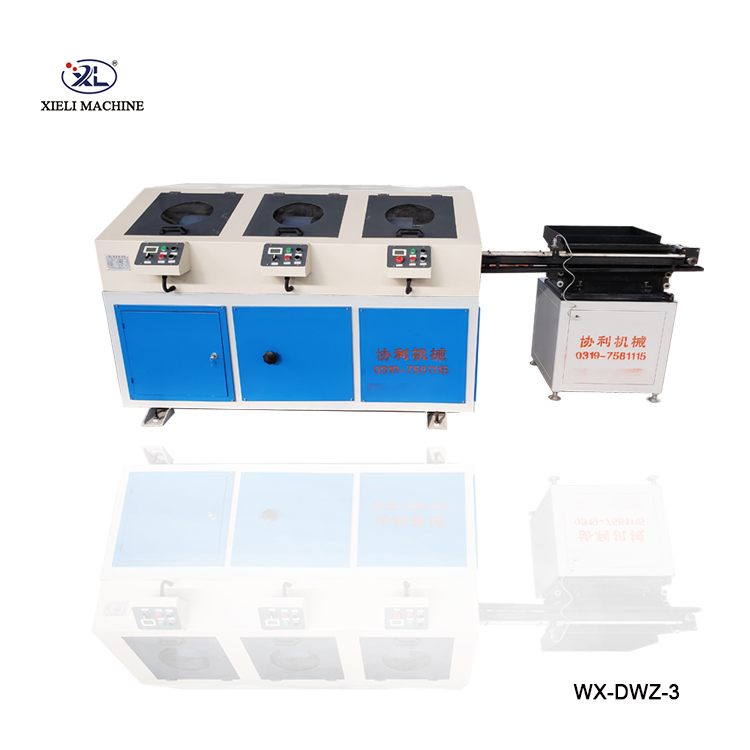
Manufacturer Comparison: Choosing the Right Pipe Polisher Partner
When investing in a Wet stainless steel pipe rust polishing machine, choosing the right manufacturer is as crucial as selecting the machine itself. A reliable partner offers not just equipment, but comprehensive support, customization options, and a proven track record. Below is a comparative overview of factors to consider when evaluating manufacturers, including our own strengths.
Manufacturer Evaluation Criteria
| Feature/Service | Our Company (Xielizz) | Competitor A (General) | Competitor B (Specialist) |
|---|---|---|---|
| Product Specialization | Specialized in wet polishing solutions, particularly for stainless steel pipes and rust removal. Deep expertise in this niche. | Broad range of metal finishing equipment, including some pipe polishers, but less specific focus on wet stainless steel. | Highly specialized in robotic polishing or large-diameter pipe systems, potentially higher cost for standard applications. |
| Technology & Innovation | PLC-controlled, HMI interface, energy-efficient motors, advanced coolant filtration. Continuous R&D into abrasive and process optimization. | Standard mechanical systems, some automation. May lag in latest digital controls or sustainable features. | Cutting-edge automation, AI-driven process optimization. High investment in R&D, reflected in premium pricing. |
| Customization Capabilities | Extensive ability to tailor machine parameters (pipe diameter range, number of heads, automation level) and integrate into existing production lines. Dedicated engineering team for bespoke solutions. | Limited customization, primarily offers standard models with optional add-ons. | High level of customization, but often for very specific, large-scale projects, leading to longer lead times. |
| Quality & Certifications | ISO 9001 certified manufacturing process. Adherence to international standards (e.g., CE, ANSI for safety). Robust materials (e.g., 304/316 stainless steel components where applicable). | May have basic quality certifications, but less emphasis on specific material or process compliance for specialized applications. | Strong international certifications (e.g., TÜV, UL) reflecting global market reach. |
| After-Sales Support & Warranty | Comprehensive 2-year warranty on major components, readily available spare parts, remote technical support, on-site installation and training by experienced engineers. | Standard 1-year warranty, limited spare parts availability, often relies on local distributors for support. | Excellent global support network, but potentially higher costs for service contracts. |
| Price Competitiveness | Highly competitive pricing for the quality and features offered, balancing advanced technology with cost-effectiveness. | Lower initial cost, but potentially higher long-term operational costs due to efficiency or maintenance. | Premium pricing, justified by advanced features and specialized capabilities, often for very high-value applications. |
| Industry Experience & Reputation | Over a decade of experience in industrial polishing solutions, strong client testimonials from diverse sectors (food, pharma, chemical). | Newer entrant or broad-based machinery supplier with less specialized experience in pipe polishing. | Long-standing reputation in niche, high-end industrial automation. |
Our commitment at Xielizz is to provide not just a machine, but a complete polishing solution. Our focus on the Wet stainless steel pipe rust polishing machine allows us to deeply understand the nuances of stainless steel finishing and deliver specialized expertise that general manufacturers might lack. Our strong technical support and dedication to client success set us apart.
Custom Solutions and Tailored Pipe Polishing Systems
Every industrial operation has unique requirements, and a one-size-fits-all approach rarely delivers optimal results. This is especially true for pipe polishing, where variations in pipe material, diameter, length, desired surface finish, and production volume necessitate tailored solutions. Our expertise extends beyond standard models to provide fully customized stainless pipe polisher systems.
Key Areas of Customization:
- Diameter and Length Adaptability: While standard machines handle a range, specific projects may require larger or smaller pipe capacities. We can design custom feeding systems and polishing heads to accommodate unusual dimensions.
- Number of Polishing Heads: Depending on the initial surface condition and the target Ra value, more or fewer polishing heads might be necessary. We can configure machines with multiple stages, allowing for progressive refinement from coarse grinding to mirror polishing in a single pass.
- Automation Level: From semi-automatic systems requiring manual loading/unloading to fully automated lines integrated with robotic handling and conveyor systems, the level of automation can be customized to match production demands and labor availability.
- Abrasive Management Systems: Customization includes specific abrasive wheel types (e.g., flap wheels, abrasive belts, sisal buffs, cotton buffs) and auto-compensation features for abrasive wear, ensuring consistent pressure and finish.
- Coolant Filtration and Recycling: For wet polishing systems, advanced multi-stage coolant filtration, oil skimmers, and recycling units can be integrated to extend coolant life, minimize waste, and ensure environmental compliance.
- Integration with Existing Lines: We provide engineering support to seamlessly integrate the pipe polisher machine into existing manufacturing or processing lines, including control system interfacing and data exchange.
- Specialized Controls: For critical applications, advanced PLC programming can include recipe management (pre-set parameters for different pipe types), remote diagnostics, and detailed production reporting.
- Material Handling Systems: Custom infeed and outfeed roller conveyors, automated loading/unloading arms, and pipe rotation mechanisms can be designed to optimize workflow and safety.
Our process for custom solutions begins with a detailed consultation to understand your specific challenges and objectives. Our engineering team then develops a conceptual design, followed by detailed drawings, manufacturing, and rigorous testing to ensure the custom Wet stainless steel pipe rust polishing machine meets your exact specifications and performance expectations.
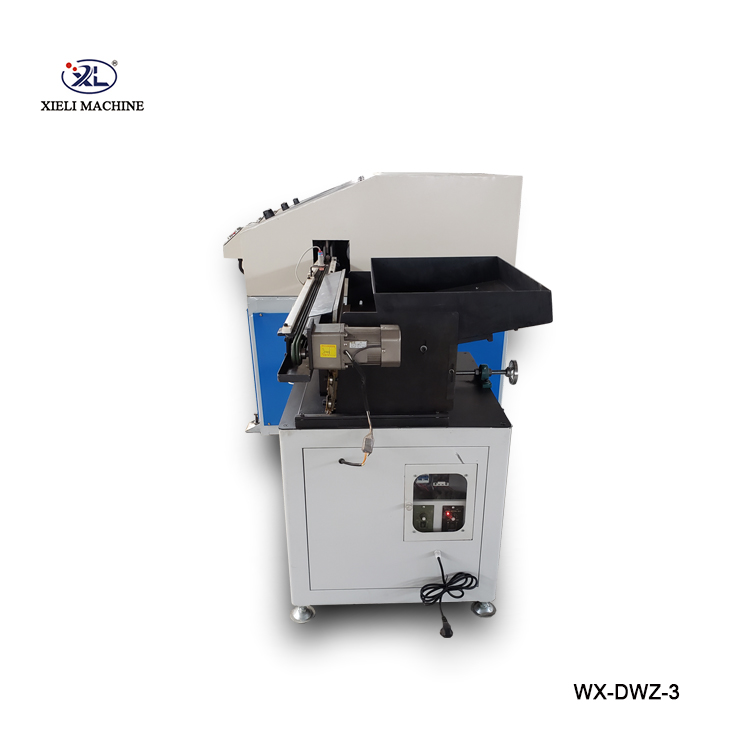
Application Cases: Real-World Impact of Pipe Polishing
The practical benefits of using a high-performance pipe polisher are best illustrated through real-world applications. These case studies highlight how the Wet stainless steel pipe rust polishing machine has delivered tangible improvements in various industrial settings.
Case Study 1: Food Processing Plant (Dairy Production)
- Challenge: A large dairy producer needed to upgrade their milk processing lines. Existing pipes showed signs of surface irregularities and minor pitting, leading to concerns about bacterial adhesion and difficulty in achieving thorough CIP cycles. Their previous dry polishing method generated excessive dust and inconsistent finishes.
- Solution: Implemented a multi-head Wet stainless steel pipe rust polishing machine customized for Φ50mm to Φ150mm stainless steel pipes, configured to achieve a surface roughness of Ra < 0.4 µm. The wet process ensured effective removal of contaminants and minimized heat tint.
- Results:
- Hygiene Improvement: Achieved an average Ra value of 0.35 µm, significantly reducing bacterial harborage sites and improving CIP effectiveness, confirmed by swab tests.
- Corrosion Resistance: Enhanced the passivation layer, leading to zero observed instances of pitting corrosion in the polished sections over 2 years (vs. 0.5% in unpolished sections).
- Operational Efficiency: Reduced polishing time by 30% compared to previous methods, and abrasive consumption decreased by 25% due to the cooling effect.
- Safety: Eliminated airborne metal dust, vastly improving operator safety and reducing maintenance on dust collection systems.
Case Study 2: Chemical Industry (Acid Transfer Lines)
- Challenge: A chemical plant experienced premature failure and leakage in their stainless steel piping used for corrosive acid transfer. Investigation revealed microscopic surface defects and weld discolorations acting as initiation points for localized corrosion.
- Solution: Deployed a heavy-duty Wet stainless steel pipe rust polishing machine with robust construction and a specialized abrasive selection to handle aggressive surface imperfections on Φ100mm to Φ200mm pipes, focusing on achieving a smooth, uniform surface for optimal corrosion resistance.
- Results:
- Extended Lifespan: Pipe service life extended by an estimated 50% due to the removal of corrosion initiation sites and enhanced surface integrity.
- Reduced Downtime: A 40% reduction in unscheduled maintenance related to pipe leaks.
- Process Optimization: Improved fluid flow dynamics, leading to a minor (2%) but measurable reduction in pumping energy consumption.
- Cost Savings: Annual savings of approximately $150,000 from reduced pipe replacement and repair costs.
Case Study 3: Architectural Design Firm (Decorative Structures)
- Challenge: An architectural firm required a mirror-like finish for large-diameter stainless steel pipes used in a prestigious public art installation. Consistency and aesthetic perfection were paramount.
- Solution: Utilized a customized Wet stainless steel pipe rust polishing machine with multiple fine-grit polishing heads and a specialized final buffing stage, capable of handling pipes up to Φ220mm.
- Results:
- Aesthetic Perfection: Achieved a consistent, high-gloss mirror finish (Ra
- Reduced Rework: Minimized the need for manual touch-ups and rework, leading to a 20% faster project completion time for the finishing phase.
- Client Satisfaction: Exceeded client expectations for surface quality, leading to future contracts for similar projects.
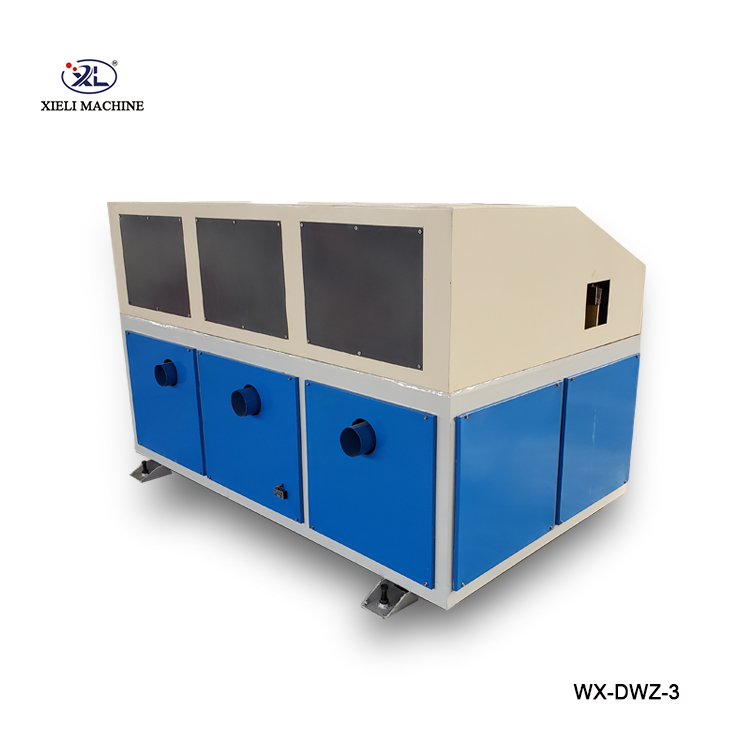
Frequently Asked Questions (FAQ) about Pipe Polishers
Understanding the technical nuances of pipe polisher machines is essential for effective operation and maintenance. Here are answers to some common professional queries:
- What is 'Ra value' in pipe polishing, and why is it important, especially for a stainless pipe polisher?
Ra, or Roughness average, is a widely used parameter to quantify surface texture. It represents the arithmetic average of the absolute values of the profile height deviations from the mean line. For a stainless pipe polisher, achieving a low Ra value (e.g., < 0.8 µm or < 0.4 µm) is critical for hygienic applications (food, pharma) to prevent microbial growth and facilitate easy cleaning. For other industries, it improves corrosion resistance by eliminating microscopic crevices that can trap corrosive agents.
- What is passivation, and how does polishing affect it for stainless steel pipes?
Passivation is a chemical process that enhances the chromium-rich passive layer on the surface of stainless steel, which is responsible for its corrosion resistance. Mechanical polishing, especially wet polishing, prepares the surface by removing surface contaminants (like free iron, oxides, and embedded abrasives) that could impede passivation. A clean, smooth surface achieved by a pipe polisher allows for a more effective and uniform passive layer to form, significantly improving the pipe's long-term corrosion resistance.
- Can the Wet stainless steel pipe rust polishing machine remove weld discoloration (heat tint)?
Yes, absolutely. Weld discoloration, or heat tint, consists of chromium oxides that form on the surface of stainless steel during welding due to high temperatures. These oxides are often less corrosion-resistant than the surrounding passive layer. The abrasive action combined with the continuous wet coolant flow of the Wet stainless steel pipe rust polishing machine is highly effective in mechanically removing these discolored layers, restoring the underlying clean metal surface, which then readily passivates.
- What is the typical lifespan of abrasive consumables on a wet pipe polishing machine compared to a dry one?
On average, the lifespan of abrasive consumables (like polishing wheels or belts) on a wet pipe polisher can be 20-40% longer than on a dry system. This is primarily due to the cooling effect of the coolant, which prevents overheating of the abrasive, and the continuous washing away of swarf, which reduces clogging and extends the cutting edge's efficiency. This translates directly into lower operational costs and reduced downtime for abrasive changes.
- What are the power requirements and installation standards for a typical industrial pipe polisher machine?
An industrial Wet stainless steel pipe rust polishing machine typically requires a 3-phase power supply, commonly 380V/50Hz or 480V/60Hz, with a total installed power ranging from 7.5 kW to 30 kW or more, depending on the number of heads and motor sizes. Installation standards often follow local electrical codes (e.g., NEC in North America, IEC in Europe) and include requirements for proper grounding, circuit breakers, and emergency stop systems. Space requirements include sufficient area for pipe loading/unloading, machine operation, and maintenance access.
- How does the Wet stainless steel pipe rust polishing machine handle different pipe materials besides stainless steel?
While optimized for stainless steel and rust removal, the Wet stainless steel pipe rust polishing machine can often be adapted to polish other metals like carbon steel, copper, aluminum, and brass pipes by selecting appropriate abrasive types and adjusting polishing parameters (speed, pressure). For specific non-ferrous applications, specialized coolants may be recommended to prevent corrosion or staining.
- What kind of maintenance is required for a wet pipe polishing system?
Regular maintenance for a wet pipe polisher machine includes daily checks of coolant levels and quality, weekly cleaning of the coolant tank and filters, periodic inspection and replacement of abrasive wheels, lubrication of moving parts (bearings, gears), and routine checks of electrical connections and safety interlocks. The robustness of modern industrial machinery, often conforming to ISO maintenance standards, ensures a long service life with adherence to scheduled maintenance. A typical delivery period for a standard machine is 4-6 weeks, with customized systems requiring 8-12 weeks, and comprehensive warranty coverage is usually 1-2 years on major components.
Trust and Reliability: Our Commitment
At Xielizz, our commitment to delivering high-performance Wet stainless steel pipe rust polishing machine solutions is built on a foundation of trust and reliability. We understand that your investment in a pipe polisher machine is critical to your operational success, and we stand by our products and services.
- Quality Assurance: All our machines are manufactured under strict ISO 9001 quality management systems, ensuring consistent product quality from design to delivery. Each component is sourced from reputable suppliers, and every machine undergoes rigorous pre-delivery testing.
- Industry Certifications: Our products comply with relevant international safety and performance standards (e.g., CE marking for European markets, adherence to ANSI safety guidelines where applicable).
- Experienced Team: With over a decade of experience in industrial polishing equipment, our team of engineers, technicians, and sales professionals possesses deep domain expertise. We have successfully delivered solutions to hundreds of clients across various industries globally.
- Comprehensive Warranty: We offer a robust warranty package, typically a 2-year warranty on major components and structural integrity, demonstrating our confidence in the durability and reliability of our machines. This is backed by readily available spare parts to minimize downtime.
- Dedicated Customer Support: Our commitment extends beyond the sale. We provide comprehensive after-sales support, including remote technical assistance, on-site installation and commissioning services, operator training, and preventative maintenance guidance. Our goal is to ensure your Wet stainless steel pipe rust polishing machine operates at peak performance throughout its lifespan.
- Transparent Processes: From initial consultation to project delivery, we maintain transparent communication, providing detailed proposals, clear delivery timelines (standard lead time 4-6 weeks; customized solutions 8-12 weeks), and regular updates on your order status.
Our goal is to be your trusted partner in achieving superior surface finishes, enhancing product quality, and improving operational efficiency.
For further insights into surface finishing technologies and their impact on industrial processes, we recommend exploring resources from leading industry bodies and academic research:
- The Role of Surface Finish in Corrosion Resistance: https://www.nickelinstitute.org/technical_literature/TechnicalGuidelines/tg1102_surfacefinishes.pdf (Nickel Institute)
- Advances in Abrasive Machining and Polishing Techniques: https://www.sciencedirect.com/journal/journal-of-materials-processing-technology (Journal of Materials Processing Technology - look for relevant articles)
- Guidelines for the Bioprocessing Equipment Standard (ASME BPE): https://www.asme.org/codes-standards/publications/bp-standard-guides (ASME)

